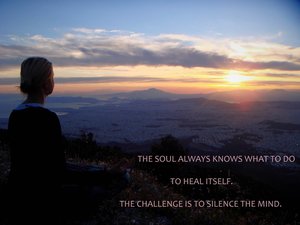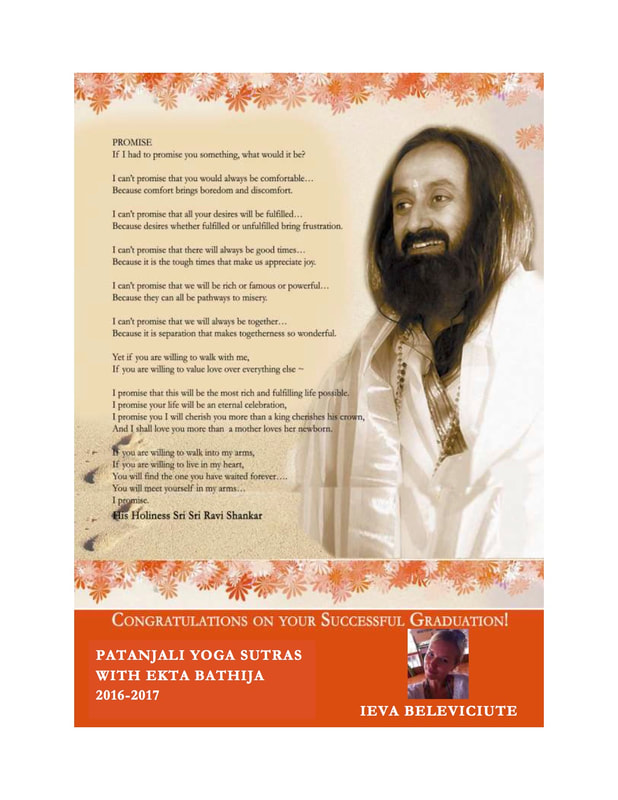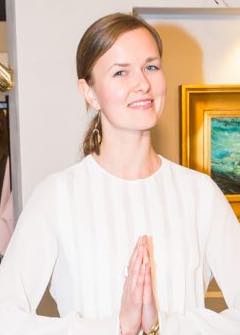Yoga sutra
Everyday you may get some inspirational message from a link below: (press "More")
Kasdien galite perskaityti įkvepiančių žinučių iš nuorodos žemiau, spausti "More" mygtuką.
Ką reiškia kai mes sakome NAMASTE?/What do we mean when we say #Namaste ?
"Palms pressed at the heart centre, head bowed in humility- the gesture of Namaste is indicative of respect to the Divinity within. Here is a deeper insight into the meaning and significance of this gesture.
It’s one of those things we do almost without thinking, at the start and end of a yoga class, palms pressed together at our hearts, bowing our heads. Some have even turned it into a piece of theatre at the end of a class, prostrating themselves to floor in a gesture intended to show complete humility and gratitude.
I remember the first time someone explained to me what the gesture and the word actually meant. A teacher at Sampoorna – Yoga Teacher Training School in India told us that it was an acknowledgement of the divine light in ourselves and in other beings. The word ‘namaste’ literally means ‘I bow to you’ in Sanskrit. It is a gesture of deep respect, made even deeper if you first bring the thumbs to your ‘third eye’ chakra, between the eyebrows, and then place the thumbs against your sternum. Everything else in a yoga class is bonus material – there is no need to fold forward at the end of every class (something my hips find tricky anyway, in easy cross position). There is also no need to say the word out loud if you are making the gesture – the hands say it all for you.
I visited a Hindu temple in Goa this week and was transfixed by a statue of Nandi – a bull god, who is a guardian of Lord Shiva and said to be the bearer of truth. There was something so calming in its anthropomorphic hands pressed together. It’s really made me think about the importance of the gesture, and the beauty and simplicity of it, too.
Many yoga teachers have brought other meanings to the gesture in classes that I have really responded to. Some say that the pressing of one palm to another brings a union between the Ida and the Pingala – the two sides of the body (Ida being mental, cool, passive, Pingala being the physical, hot, active). The hands are placed directly in front of the central Sushumna energy channel, following the length of the spine, helping yoga practitioners feel centred before they start a class and to set their intention. The sense of the union of two parts can be extended to the person we offer the gesture to, or be the connection we feel between our own bodies and the universe around us.
Some teachers ask us to touch our thumbs to our hearts to seal our intention to respond to people with love and kindness; to our lips, to speak only kind and loving things; then to the third eye to think only kind and loving thoughts.
I like to think of the gesture as connecting directly to our anahata or heart chakra, the energy centre residing behind our thumbs, increasing the flow of divine love and light from inside ourselves. I like to talk to a class about the heart chakra as the seat of health, prosperity and abundance, and how we offer that to another person when we make the gesture of namaskar mudra. When the heart chakra is blocked, it can manifest physically as respiratory or heart problems, or emotionally as jealousy, an inability to forgive, or defensiveness. Focusing on the heart chakra and its quality of openness is a beautiful way to start and end a class, and frames the asanas you choose with a purpose, not least heart-opening ones such as upward-facing dog or humble warrior.
Knowing why we perform certain gestures and asanas can make all the difference during our yoga practice. I remember a few game-changers for me – from being told that yoga’s straight spine is ensure the most efficient flow of prana (life-force) that we breathe in or that we unconsciously curl into the foetal position when we’re under stress, often leading to tightness in the hips and shoulders. I’d always thought that my hip and shoulder problems were a result of bad desk posture or too many chaturangas – there is no doubt in my mind now that stress played a huge part in these things..."
My first YTTC school: Sampoorna Yoga school :)
It’s one of those things we do almost without thinking, at the start and end of a yoga class, palms pressed together at our hearts, bowing our heads. Some have even turned it into a piece of theatre at the end of a class, prostrating themselves to floor in a gesture intended to show complete humility and gratitude.
I remember the first time someone explained to me what the gesture and the word actually meant. A teacher at Sampoorna – Yoga Teacher Training School in India told us that it was an acknowledgement of the divine light in ourselves and in other beings. The word ‘namaste’ literally means ‘I bow to you’ in Sanskrit. It is a gesture of deep respect, made even deeper if you first bring the thumbs to your ‘third eye’ chakra, between the eyebrows, and then place the thumbs against your sternum. Everything else in a yoga class is bonus material – there is no need to fold forward at the end of every class (something my hips find tricky anyway, in easy cross position). There is also no need to say the word out loud if you are making the gesture – the hands say it all for you.
I visited a Hindu temple in Goa this week and was transfixed by a statue of Nandi – a bull god, who is a guardian of Lord Shiva and said to be the bearer of truth. There was something so calming in its anthropomorphic hands pressed together. It’s really made me think about the importance of the gesture, and the beauty and simplicity of it, too.
Many yoga teachers have brought other meanings to the gesture in classes that I have really responded to. Some say that the pressing of one palm to another brings a union between the Ida and the Pingala – the two sides of the body (Ida being mental, cool, passive, Pingala being the physical, hot, active). The hands are placed directly in front of the central Sushumna energy channel, following the length of the spine, helping yoga practitioners feel centred before they start a class and to set their intention. The sense of the union of two parts can be extended to the person we offer the gesture to, or be the connection we feel between our own bodies and the universe around us.
Some teachers ask us to touch our thumbs to our hearts to seal our intention to respond to people with love and kindness; to our lips, to speak only kind and loving things; then to the third eye to think only kind and loving thoughts.
I like to think of the gesture as connecting directly to our anahata or heart chakra, the energy centre residing behind our thumbs, increasing the flow of divine love and light from inside ourselves. I like to talk to a class about the heart chakra as the seat of health, prosperity and abundance, and how we offer that to another person when we make the gesture of namaskar mudra. When the heart chakra is blocked, it can manifest physically as respiratory or heart problems, or emotionally as jealousy, an inability to forgive, or defensiveness. Focusing on the heart chakra and its quality of openness is a beautiful way to start and end a class, and frames the asanas you choose with a purpose, not least heart-opening ones such as upward-facing dog or humble warrior.
Knowing why we perform certain gestures and asanas can make all the difference during our yoga practice. I remember a few game-changers for me – from being told that yoga’s straight spine is ensure the most efficient flow of prana (life-force) that we breathe in or that we unconsciously curl into the foetal position when we’re under stress, often leading to tightness in the hips and shoulders. I’d always thought that my hip and shoulder problems were a result of bad desk posture or too many chaturangas – there is no doubt in my mind now that stress played a huge part in these things..."
My first YTTC school: Sampoorna Yoga school :)




